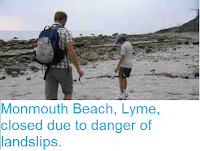Caddisflies, Trichoptera, are a widespread and numerous (over 12 000
described species) group of Insects closely related to the Lepidoptera
(Butterflies and Moths). Like Butterflies and Moths, Caddisflies undergo
a complete metamorphosis upon reaching maturity, with a long-lived
caterpillar-like larvae, and a shorter-lived flying adult stages (which
typically lives one-to-two weeks). However, unlike the larvae of
Butterflies and Moths, Caddisfly larvae are entirely aquatic, with only
the winged adults emerging above the water surface. Most larval
Caddisfly inhabit cases which they make out of silk, which some species
are noted for covering with small stones, pieces of plant matter, shells
or other matter they find in their environment. The larvae may be
herbivorous or carnivorous, adult Caddisfly generally do not eat at all.
They have a fossil record dating back to the Triassic.
The Necrotauliidae are a curious group of Caddisflies known from the Triassic and Jurassic of Europe, Asia and Australia. Their wing venetion sugests that they are members of the Trichoptera, but they have a number of un-Caddifly-like characteristics, including scales on their wings, a trait generally associated with the Lepidoptera. As such their is some dispute about the classification of this group, with some palaeoentomologists regarding them as early members of the Lepidoptera, others as a stem group from which both the Lepidoptera and the Trichoptera are descended, and while most experts do accept them to be Caddisflies, they differ in whether they are a distinct group that branched off early in the history of the Trichoptera, or a polyphyletic assemblage of early Caddisflies from which the more modern groups are descended.
In a paper published in the journal Psyche on 9 May 2018, Richard Kelly of the School of Earth Sciences at the University of Bristol, and the Department of Natural Sciences at the National Museum of Scotland, Andrew Ross, also of the Department of Natural Sciences at the National Museum of Scotland, and of the Department of Earth Sciences at the Natural History Museum, and Robert Coram, also of the School of Earth Sciences at the University of Bristol, and of British Fossils, describe a new species of Necrotaulid Caddisfly from the Early Jurassic of Lyme Regis, England, as part of a review of the Necrotaulid Caddisflies of the Triassic and Jurassic of England.
The new species is placed in the genus Austaulius, which is created by the authors of the paper to include a number of previously described species, including the Australian Prorhyacophila colliveri (now Austaulius colliveri), which as the oldest described species assigned to the new genus is taken as its type species, the name 'Austaulius' referring to this, and given the specific name haustrum, in reference to the mouthparts of the species, which form a sucking proboscis. The species is described from a single specimen collected from Monmouth Beach at Lyme Regis. This specimen has both forewings and a partial hind wing, as well as the thorax, head, some antennomeres, some leg segments, the maxillary and labial palps, and the haustellum.
Austaulius haustrum from Monmouth Beach, Lyme Regis, Dorset. Bottom left figure is the right forewing of the specimen flipped so the costal margin is on top. Scale bars are 1 mm. Kelly et al. (2018).
See also...
Follow Sciency Thoughts on Facebook.







